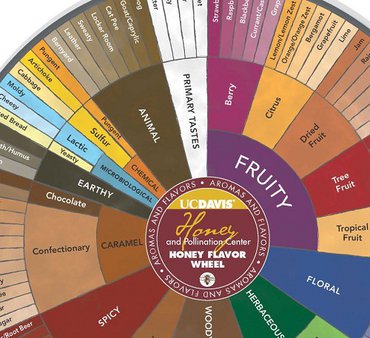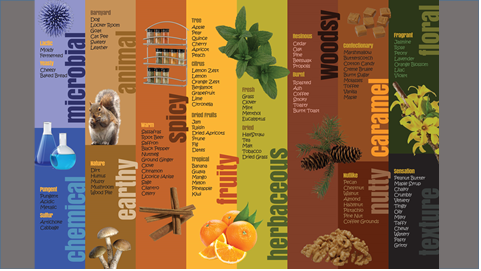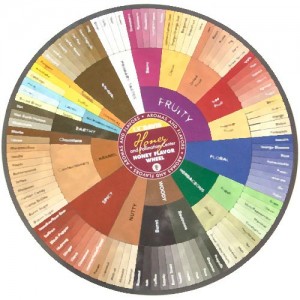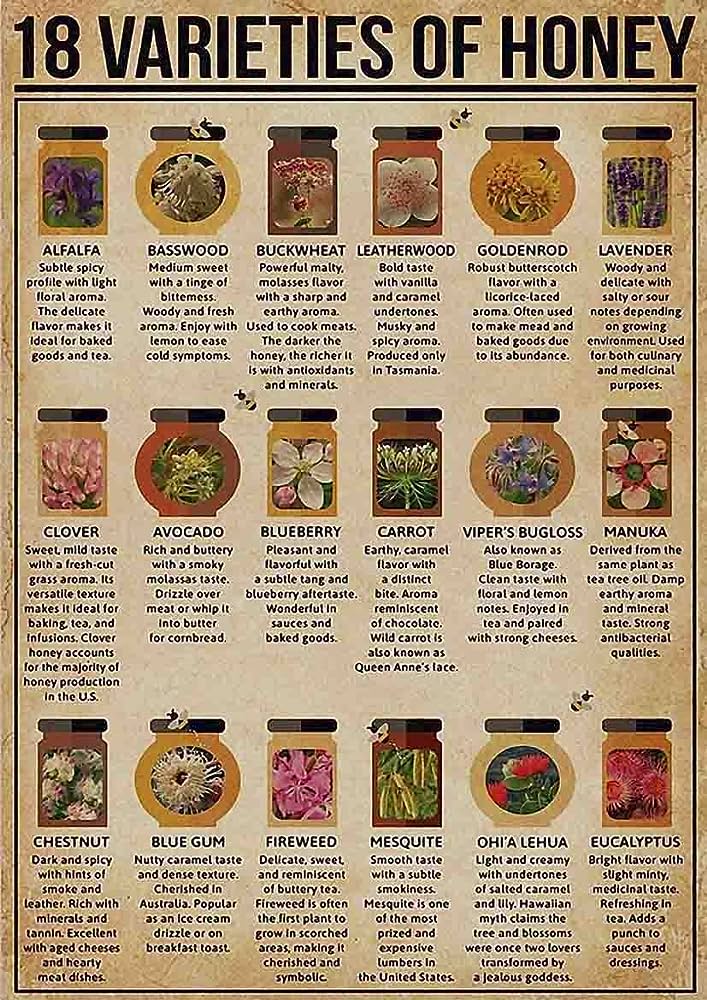
Imagine biting into a spoonful of golden honey, expecting the familiar sweet taste, only to be met with a surprising burst of richness and complexity. How is it that honey from different corners of the world can vary so greatly in flavor? In this article, we will explore how geography plays a significant role in shaping honey’s flavor profile. From the floral sources available to the bees, to the climate and soil conditions, we will uncover the fascinating factors that contribute to the unique taste of honey from different regions. Prepare to embark on a journey that will forever change the way you appreciate this beloved natural sweetener.
Geography and Honey
Honey, the sweet nectar produced by bees, is not only a delectable treat but also an intricate product shaped by various geographical factors. The unique flavor profiles found in different types of honey can be attributed to the impact of geography on its creation. From the climate conditions to the plant sources, and even the beekeeping practices, geography plays a crucial role in shaping the taste and characteristics of honey.
The impact of geography on honey flavor
Geography exerts its influence on honey flavor through a combination of factors such as climate, soil composition, and floral diversity. These factors interact to create a distinct terroir, a concept borrowed from the world of wine, which refers to the unique characteristics imbued in a product by the environment in which it is produced. Just as the terroir of a vineyard influences the flavor of wine, the geographical attributes of an area can enhance or modify the taste of honey.
Factors influenced by geography
Geography impacts several key factors that contribute to the flavor of honey. One such factor is the plant sources available to the bees for nectar collection. The geographical variations in plant species result in different flavors and aromas in the honey produced. Additionally, climate conditions, including temperature, rainfall, and humidity, affect the honey production process and contribute to variations in flavor. Lastly, the beekeeping practices employed in different regions can also influence honey flavor due to variations in bee behavior and foraging patterns.
The role of terroir
Terroir, as mentioned before, plays a significant role in shaping the flavor of honey. Just as a specific terroir imparts unique qualities to a wine, different regions imbue their honey with characteristics specific to their geographical makeup. The combination of climate, soil, and plant species in an area manifests in distinct flavor profiles, creating a diverse range of honey variations.
Variances in climate and soil composition
Climate conditions, such as temperature and rainfall patterns, can dramatically impact honey production. Bees are highly sensitive to temperature fluctuations, and different temperature ranges can affect their foraging behavior and nectar collection. Furthermore, rainfall and humidity levels directly impact the availability of nectar and pollen, which ultimately affects the taste and texture of the honey produced.
Soil composition also plays a crucial role in honey flavor. The minerals, nutrients, and organic matter present in the soil are transferred to the plants, which in turn influences the composition of the nectar collected by bees. Different soil types can modify the sugar content, acidity, and floral notes in honey, leading to diverse flavor profiles.
Plant Sources
Floral diversity is a key determinant of honey flavor and aroma. The types of plants available in an area for bees to gather nectar greatly influence the resulting honey’s characteristics. Different geographical regions boast unique plant species, resulting in a rich tapestry of honey flavors around the world.
Geographical variations in plant species
The geographical distribution of plant species is a direct result of climate, soil, and other environmental factors. The diverse ecosystems found across the globe give rise to a plethora of plant species, each with its unique floral composition contributing to honey’s flavor. From the fragrant lavender fields of the Provence region in France to the wildflowers of the Australian outback, unique landscapes harbor distinct plants that shape the taste of honey.
Influence of specific plant sources on flavor
Certain plants have a more pronounced impact on honey flavor due to their distinctive properties. For example, honey derived from lavender plants tends to have a delicate and floral aroma, while honey derived from citrus blossoms carries a citrusy tang. Each plant imparts its flavor profile to the honey, creating a diverse range of taste experiences for honey enthusiasts.

Climate Conditions
Climate conditions have a profound impact on honey production and subsequently on the flavor of the honey produced. The interplay between temperature, rainfall, humidity, and seasonality significantly affects the bees’ foraging behavior, nectar availability, and honey composition.
Temperature and honey production
Temperature plays a vital role in influencing honey production. Bees are cold-blooded insects, and their activity is tightly connected to temperature. Warmer temperatures stimulate increased foraging activity, resulting in the collection of more nectar and ultimately leading to higher honey production. The ambient temperature also affects the enzymatic activity within the hive, which can influence the composition and texture of the honey.
Rainfall and humidity effects
Rainfall and humidity levels directly affect the availability of nectar and pollen. Ample rainfall ensures abundant flower growth and nectar availability for bees to collect. This abundance of resources contributes to the production of flavorful honey. In contrast, regions with limited rainfall may have fewer flowering plants, resulting in a more limited range of flavors. Furthermore, humidity levels can impact the intensity of floral aromas in honey, as excessive moisture can dilute the volatile compounds responsible for those aromas.
Seasonal variations in flavor
Each season brings about changes in the availability and composition of nectar sources. The different flowering patterns and bloom cycles throughout the year contribute to seasonal variations in honey flavor. Spring honey, for example, often has a lighter and more delicate flavor, while autumn honey tends to be darker and richer, reflecting the changing botanical landscape during those seasons.
Beekeeping Practices
Beekeeping practices vary across different regions and can have a significant impact on honey flavor. Traditional methods passed down through generations, as well as the specific techniques employed by beekeepers, shape the characteristics of the honey produced.
Distinctive practices in different regions
Various regions have long-standing traditions and specific practices tied to honey production. These practices can range from hive placement and management techniques to specific harvesting and extraction methods. For instance, some regions practice migratory beekeeping, where hives are moved to follow the blooming patterns of certain plant species, leading to honey with distinct flavor profiles.
Bee behavior and foraging patterns
Bees collect nectar and pollen from flowers as their primary food source. The plants they visit, the distance they fly, and the order in which they collect nectar from different plant species all have an impact on honey flavor. Bee behavior and foraging patterns can be influenced by variations in regional floral availability, which in turn influence the flavor and aroma of the honey produced.
Impacts on honey flavor
The combined effect of beekeeping practices and bee behavior on honey flavor is significant. The symbiotic relationship between bees and their environment, as influenced by beekeepers, shapes the quality and characteristics of honey. The care and attention given to the bees, their hives, and the surrounding ecosystem all contribute to the final flavor profile of the honey harvested.

Jarrah Honey
Hailing from Western Australia, Jarrah honey is a unique honey variety renowned for its distinct qualities. The honey derives its name from the Jarrah tree, Eucalyptus marginata, native to the region. The honey produced from the nectar of these trees offers a remarkable taste experience.
Unique honey from Western Australia
Jarrah honey is highly regarded for its deep, reddish-brown color and its strong, robust flavor. It is often described as rich, bold, and malty, with a slightly bitter aftertaste. The flavor intensity of Jarrah honey makes it a favorite among honey connoisseurs.
Characteristics influenced by Jarrah trees
The Jarrah tree and its blossoms play a significant role in shaping the flavor of the honey. The nectar collected by bees from the Jarrah flowers contributes to the honey’s distinct taste. The tree’s bark and leaves also have antimicrobial properties, which may further enhance the honey’s medicinal qualities.
Rich flavor and medicinal properties
In addition to its luxurious flavor, Jarrah honey is highly regarded for its potential therapeutic properties. It is known for its high antimicrobial activity, attributed to its unique composition of bioactive compounds. Jarrah honey is often used in natural remedies for its reputed wound-healing properties and its potential as an immune system booster.
Manuka Honey
Originating from the pristine landscapes of New Zealand, Manuka honey has gained worldwide recognition for its extraordinary taste and exceptional health benefits. The honey owes its unique characteristics to the nectar collected from the Manuka plant (Leptospermum scoparium), a flowering shrub native to New Zealand.
Originating from New Zealand
Manuka honey has its roots in the rugged terrains of New Zealand, where the Manuka plant flourishes. The country’s unique geography, with its unpolluted air and pristine landscapes, provides an ideal environment for the growth of Manuka plants, yielding exceptionally high-quality honey.
Manuka plants and their impact on flavor
The Manuka plant’s nectar contains a compound called methylglyoxal (MGO), which is responsible for the distinctive flavor and health benefits associated with Manuka honey. MGO gives the honey its characteristic earthy, slightly bitter taste and a lingering sweetness. This unique flavor profile sets Manuka honey apart from other honey varieties.
Unique taste and therapeutic qualities
Manuka honey is highly sought after for its therapeutic qualities. Its high concentration of MGO gives it potent antibacterial properties, making it a popular choice for natural remedies. Manuka honey is often used to soothe sore throats, support immune health, and promote overall well-being. Its robust flavor and reputed health benefits have made it a staple in many households around the world.

Clover Honey
Clover honey, with its delicate and pleasant flavor, is one of the most popular and versatile types of honey available. The honey is predominantly derived from the nectar of clover plants, which are widespread around the world.
Widespread clover cultivation
Clover plants are cultivated in various regions globally, making clover honey readily available to honey enthusiasts worldwide. The extensive growth and abundance of these plants contribute to a consistent supply of clover honey throughout the year.
Delicate flavor influenced by clover species
Clover honey is known for its light, sweet, and slightly floral flavor. The specific clover species prevalent in an area can impart distinct taste variations to the honey. The floral notes in clover honey are often subtle, allowing for a versatile and palatable taste that makes it a favorite for both culinary and medicinal purposes.
Popular and versatile honey
The mild and agreeable flavor of clover honey makes it a popular choice for a wide array of applications. Its versatility stems from its ability to complement other flavors without overpowering them, making it a sought-after ingredient in baking, cooking, and as a natural sweetener. Clover honey is a pantry staple that never fails to add a touch of sweetness to any culinary creation.
Acacia Honey
Acacia honey, named after the delicate and fragrant acacia trees it is derived from, is a cherished honey variety enjoyed in both Europe and North America. The honey’s light color, fine texture, and subtle floral notes make it highly desirable among consumers.
Common in Europe and North America
Acacia trees, particularly the black locust acacia (Robinia pseudoacacia), are prevalent in various regions of Europe and North America. This widespread distribution ensures a steady supply of acacia honey in these regions, making it a beloved choice among honey lovers.
Distinctive floral notes from acacia trees
Acacia honey is prized for its unique floral bouquet. The blossoms of the acacia tree produce nectar with a delicate and light aroma, which directly translates into the honey’s flavor profile. The honey tends to be exceptionally light and clear, with subtle floral undertones that are highly prized.
Light and sweet flavor profile
Acacia honey’s flavor characteristics are often described as mild, light, and sweet. The honey has a distinctly low acidity, lending it a smooth and delicate taste. Its subtle floral notes make it a delightful addition to teas, desserts, and other culinary endeavors, where it enhances the natural flavors without overpowering them.

Leatherwood Honey
Leatherwood honey, a unique honey variety hailing from Tasmania, Australia, is celebrated for its pungent taste and distinct flavor profile. It is extracted from the nectar of the Leatherwood tree (Eucryphia lucida), a native species found exclusively in Tasmania’s pristine wilderness.
Tasmanian specialty honey
Leatherwood honey holds a special place in the hearts of honey enthusiasts around the world due to its limited geographic origin. The Leatherwood tree’s exclusive presence in Tasmania’s lush rainforests makes this honey a rare and prized delicacy.
Leatherwood trees and their impact on flavor
The Leatherwood tree’s creamy white blossoms produce nectar with an intense, aromatic scent that contributes to the honey’s unique flavor. The nectar possesses a strong, almost spicy flavor that translates into the final product. This distinctive flavor profile sets Leatherwood honey apart from other honey varieties, making it a treasured gem for discerning palates.
Unique and pungent taste
Leatherwood honey boasts a sharp, pungent taste that is unequalled by any other honey variety. Its robust flavor is often described as bold, tangy, and slightly bitter, with complex floral undertones. This exceptional taste experience has earned Leatherwood honey a devoted following among honey enthusiasts who appreciate its singular character.
Conclusion
Geography has a remarkable influence on the flavor and characteristics of honey. The interplay of factors such as climate, soil composition, plant sources, and beekeeping practices shapes the profile of honey varieties worldwide. Each geographical region offers a unique terroir that imparts distinct flavors, aromas, and therapeutic properties to their honey. By appreciating the diversity of honey profiles, we can embark on a delightful journey exploring the regional nuances and experiencing the richness beekeepers have cultivated for centuries. So, next time you savor a jar of honey, allow yourself to be transported to different corners of the world and embrace the captivating flavors nature has bestowed upon us.
